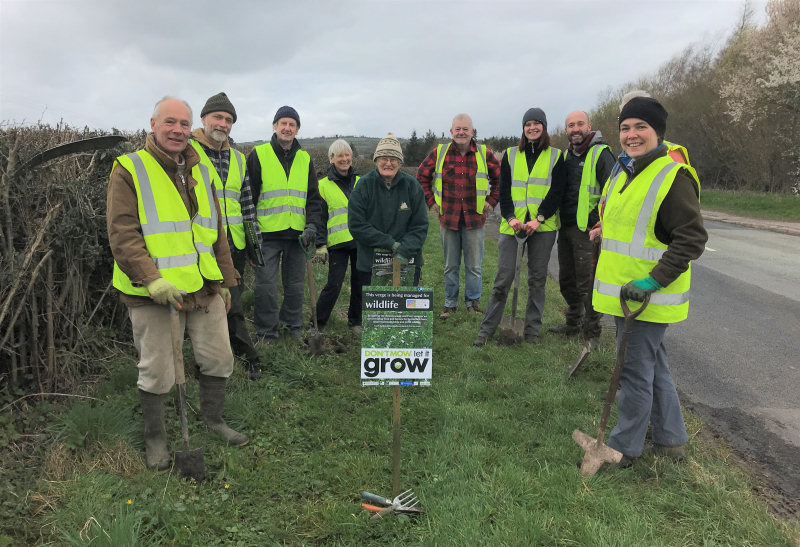A group of conservation volunteers in Shropshire is calling for roadside verges to be left uncut to benefit plants and wildlife.

Restoring Shropshire’s Verges Project (RSVP) is working with Shropshire Council, the Stepping Stones Project and the National Trust to protect verges in south Shropshire, leaving them to grow wild until late summer.
To raise awareness and help people understand why these verges are being left to grow, volunteers have put up signs that say: ‘Don’t mow, let it grow. These verges are being managed for wildlife.’
South Shropshire has some of the best wildflower verges in the county, but sadly they are being cut far too early in the year.
Early cutting stops wildflowers from growing and setting seed. When the cuttings are left on the ground to rot down, the fertility levels of the soil increases and invasive plants like nettles, brambles and hogweed develop, crowding out wildflowers.
The biodiversity of our roadsides is reducing and will eventually be lost if the verges are cut before the plants have chance to flower in the summer, says the RSVP.
Peter Carty, Chair of RSVP said: “When left to grow, wildflowers provide pollinators likes bees and butterflies with food and shelter for small mammals, birds and other invertebrates.
Known as the ‘Meadow Maker’, Yellow Rattle is one of the most important wildflower species to establish in a meadow habitat. It’s a semi-parasitic plant that weakens grass growth and allows wildflowers to establish more quickly.
There are lots of ways you can get involved and support our work. Have a go at planting wildflowers in your garden. Dog Daisy, Knapweed, Bettany and Cowslip are all good species to grow. If you want help turn your local verge into a haven for wildlife, get in touch with the RSVP. In the meantime, download ‘The Good Verge Guide’ from Plantlife for some initial inspiration.”
The National Trust’s Stepping Stones project, which aims to create corridors of habitat for wildlife between the Long Mynd, Stretton Hills and the Stiperstones, has generated funding for the verges project.
Charlie Bell, Stepping Stones Project Officer said: “Wildflower meadows are one of the UK’s most threatened habitats. Managed well, our roadside verges could become long, linear wildflower meadows which act as habitat in their own right, as well as linking other patches of habitats together. This would provide food and places to live for animals, insects and birds and help them move freely through the landscape.”
Andy Wilde, head of highways with Shropshire Council said: “It has been refreshing to work with RSVP, National Trust and local communities on an initiative that has such a positive impact on wildlife, environment and the aesthetic of the area without placing further pressures on the council’s already stretched budgets.
“It really would seem to be a win-win for everyone involved and we are grateful to all the volunteers that have helped make this happen. The council will continue to watch with interest over the year to see how these verges develop and how our maintenance regimes can be adapted, with a view to looking at how such an initiative may be scaled up across the county in future.”





 Shropshire Live is regulated by
Shropshire Live is regulated by 